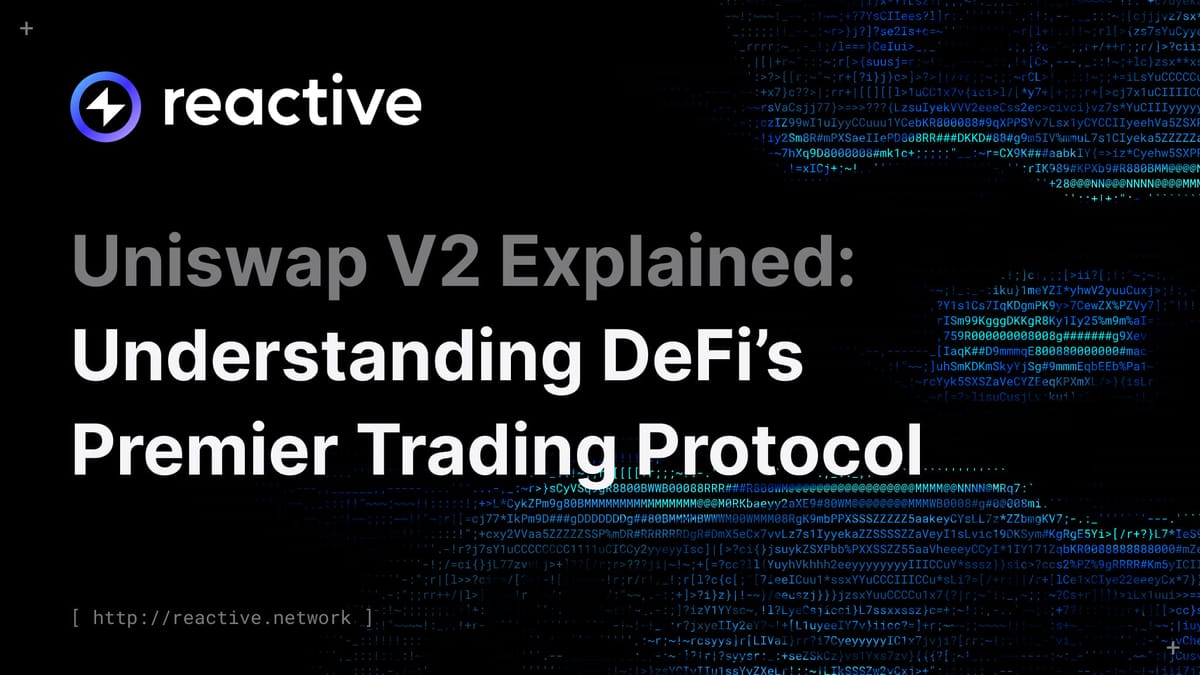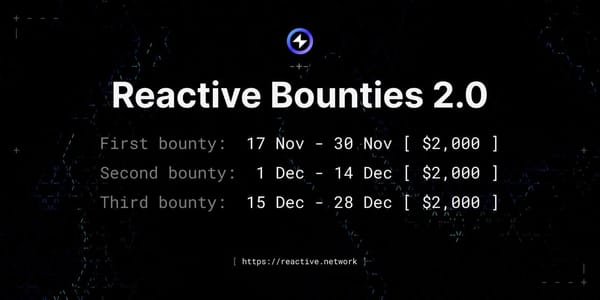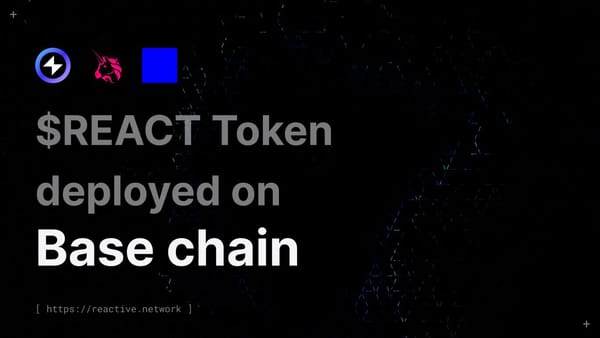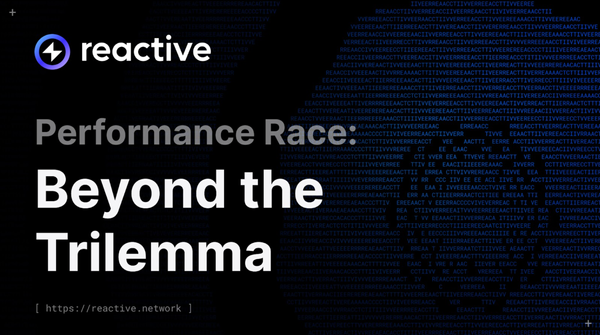Uniswap V2 Explained: Understanding DeFi’s Premier Trading Protocol
This article provides deeper insight into robust and flexible framework that Uniswap provides to the DeFi ecosystem.

Uniswap V2, a decentralized finance protocol, operates on the Ethereum blockchain, facilitating automated trading of decentralized tokens. At its core are liquidity pools and smart contracts that enable seamless token swaps. Understanding Uniswap-like DEXes is crucial for understanding DeFi, smart contract applications, and Reactive use cases. By the end of this lesson, you'll be equipped with knowledge on:
- The structure and function of Uniswap V2 pools, including how they facilitate token swaps and liquidity provisioning.
- The constant product formula (x * y = k) that governs the pricing mechanism within Uniswap V2.
- The execution and significance of Swap and Sync events in maintaining pool dynamics and providing transparency.
- A practical understanding through a code example that demonstrates the swap function within Uniswap V2's smart contracts.
Uniswap V2 Pools
Liquidity pools in Uniswap V2 are essentially reserves of two tokens, forming a trading pair. These pools are the backbone of the Uniswap ecosystem, allowing users to trade tokens without the need for traditional market makers.
In Uniswap V2, each trade or liquidity provision is executed through transactions on the Ethereum blockchain. These transactions are public and can be viewed on Etherscan or similar block explorers.
Smart contracts in Uniswap V2 manage the liquidity pools, dictate the rules for token swapping, and ensure that trades are executed according to the protocol's algorithm, often referred to as the Constant Product Market Maker model.
The Constant Product Formula
The Uniswap V2 smart contract uses this formula: x * y = k, where x and y represent the quantity of the two tokens in the liquidity pool, and k is a constant. This formula maintains the pool's total liquidity while allowing the token prices to fluctuate based on trading activity.
Code Example: Here's a simplified snippet of what a Uniswap V2 swap() function might look like (see the explanation below the code):
function swap(uint amount0Out, uint amount1Out, address to, bytes calldata data) external {
require(amount0Out > 0 || amount1Out > 0, "UniswapV2: INSUFFICIENT_OUTPUT_AMOUNT");
(uint112 reserve0, uint112 reserve1,) = getReserves(); // fetches reserves of the pool
require(amount0Out < reserve0 && amount1Out < reserve1, "UniswapV2: INSUFFICIENT_LIQUIDITY");
uint balance0;
uint balance1;
{
uint amount0In = reserve0 - (balance0 = reserve0 - amount0Out);
uint amount1In = reserve1 - (balance1 = reserve1 - amount1Out);
require(amount0In > 0 || amount1In > 0, "UniswapV2: INSUFFICIENT_INPUT_AMOUNT");
uint balanceAdjusted0 = balance0 * 1000 - amount0In * 3;
uint balanceAdjusted1 = balance1 * 1000 - amount1In * 3;
require(balanceAdjusted0 * balanceAdjusted1 >= uint(reserve0) * uint(reserve1) * (1000**2), "UniswapV2: K");
// Emit the Swap event
emit Swap(msg.sender, amount0In, amount1In, amount0Out, amount1Out, to);
}
_update(balance0, balance1, reserve0, reserve1);
if (amount0Out > 0) _safeTransfer(token0, to, amount0Out);
if (amount1Out > 0) _safeTransfer(token1, to, amount1Out);
if (data.length > 0) {
IUniswapV2Callee(to).uniswapV2Call(msg.sender, amount0Out, amount1Out, data);
}
}In this function:
amount0Outandamount1Outare the amounts of each token that the caller wants to receive from the pool.- The function first checks that the output amounts are positive and that the swap doesn't deplete the pool's reserves.
- It then calculates the input amounts (
amount0Inandamount1In) as the difference between the initial reserves and the new balances after the swap. - The contract ensures that the trade maintains the constant product invariant (k) after accounting for a 0.3% fee (
balanceAdjusted0andbalanceAdjusted1calculations). - The
_updatefunction is called to update the pool's reserves with the new balances. - Tokens are transferred to the recipient's address
to. - If there is callback data (
data), it calls theuniswapV2Callfunction on the recipient address, which can be used for more complex interactions like flash swaps. - The
Swapevent is emitted right after calculating the input and output amounts and before updating the reserves. TheSwapevent logs the sender, the amounts of tokens coming in and going out of the pool, and the recipient of the tokens.
This logic encapsulates the essence of a swap transaction in Uniswap V2, balancing the pool's reserves to maintain the constant product while facilitating token exchanges.
We will be mostly interested in Swap events to monitor the blockchain activity and run Reactive smart contracts based on it. Since the code of the pool smart contract does not change, most of the information that is different for every transaction is being logged in the event. So let’s talk a bit more about the two types of events we’ll be most interested in: Swap and Sync.
Events in Uniswap V2
Swap
The Swap event is emitted every time a trade occurs in a Uniswap V2 pool. It provides vital information about the transaction, such as the number of tokens involved in the swap and the addresses of the trader and recipient.
Event structure example:
event Swap(
address indexed sender,
uint amount0In,
uint amount1In,
uint amount0Out,
uint amount1Out,
address indexed to
);In this event:
senderis the address that initiated the swap.amount0Inandamount1Inare the amounts of the respective tokens that were sent to the pool.amount0Outandamount1Outare the amounts of the respective tokens that were sent from the pool.tois the address that receives the output tokens.
You can see this event in the list of the events in this transaction on Etherscan.
Sync
The Sync event is emitted whenever the reserves of a Uniswap V2 pool are updated. This event occurs after a swap when liquidity is added or removed, or when there's a direct token transfer into or out of the pool. The Sync event helps keep track of the pool's reserves current state.
Event Structure Example:
event Sync(uint112 reserve0, uint112 reserve1);In this event:
reserve0andreserve1represent the updated reserves of the pool's two tokens.
The Sync event is critical for maintaining up-to-date information on the pool's liquidity, which in turn affects trading price and slippage. You can see this event in the list of the events in this transaction on Etherscan.
Conclusion
Uniswap V2 exemplifies the innovative spirit of decentralized finance, showcasing how automated market makers (AMM) can create efficient and dynamic trading platforms. We've unraveled the constant product formula that underpins its operation, navigated through the critical Swap and Sync events, and dissected a code snippet to understand the on-chain mechanics of token swapping. Through this exploration, we've gained a deeper appreciation for the robust and flexible framework that Uniswap provides to the DeFi ecosystem.
Join our bounty program today to start building with Reactive Smart Contracts and bring your innovative ideas to life on the Reactive Network!
About Reactive Network
The Reactive Network, pioneered by PARSIQ, ushers in a new wave of blockchain innovation through its Reactive Smart Contracts (RSCs). These advanced contracts can autonomously execute based on specific on-chain events, eliminating the need for off-chain computation and heralding a seamless cross-chain ecosystem vital for Web3’s growth.
Central to this breakthrough is the Inversion of Control (IoC) framework, which redefines smart contracts and decentralized applications (DApps) by imbuing them with unparalleled autonomy, efficiency, and interactivity. By marrying RSCs with IoC, Reactive Network is setting the stage for a transformative blockchain era, characterized by enhanced interoperability and the robust, user-friendly foundation Web3 demands.





